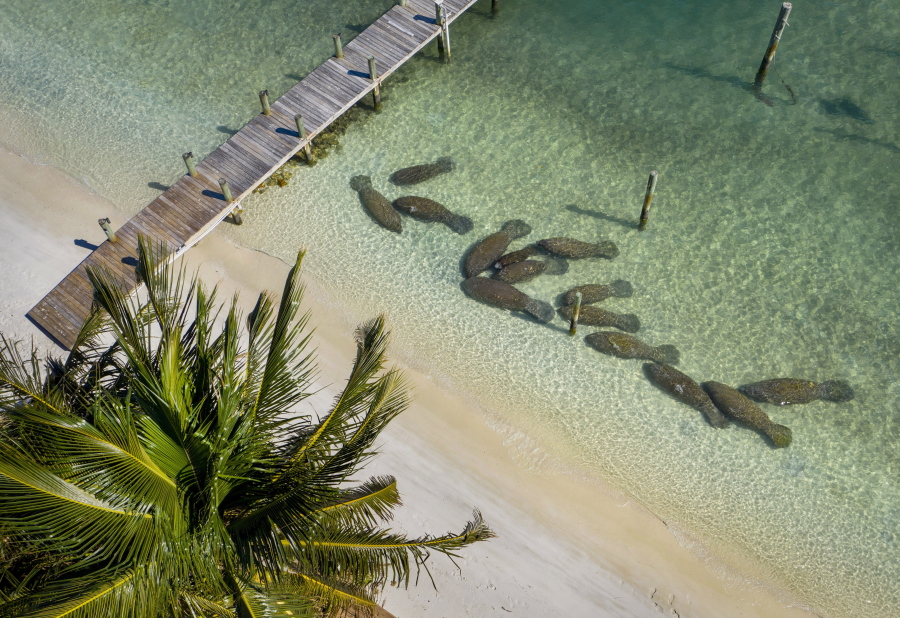ST. PETERSBURG, Fla. — As winter approaches Florida, a pilot feeding plan could save many manatees from starvation — but they will still face the long-term threat of manmade water pollution stifling their food supply, wildlife officials said Wednesday.
The slow-moving marine mammals will soon begin to congregate at warm-water sites such as power plants as the ocean temperatures cool, and there may not be enough seagrass to sustain them, officials told the state Fish and Wildlife Conservation Commission.
Florida Power & Light, the state’s largest electric utility, is putting up $700,000 for a “temporary field response station” to feed the manatees at its plant in Cape Canaveral on the East Coast. The money is also for rescue and rehabilitation of distressed manatees, the company said in a news release.
The program has not been tried before.
“The eyes of the world are on this,” said wildlife commission chair Rodney Barreto. “We’ve got to get it right.”
Officials stress that people should not randomly feed the marine mammals. They say it is illegal to do so and leads to an unhealthy association between the animals and food sources.
The pilot feeding program is intended as a temporary stopgap to prevent more manatee deaths while the state spends millions of dollars restoring the seagrass beds in areas such as the Indian River Lagoon, which is a critical winter habitat.
There are between 7,000 and 8,000 manatees — also known as sea cows — in Florida, according to state estimates. They are close relatives of elephants and can live up to 65 years, but they reproduce slowly.
More than 1,000 manatees have died in Florida waters so far in 2021, by far a record number in a single year. Some are killed by boat strikes and many more scarred by those collisions, but what is most concerning is that so many starve to death because polluted water kills the seagrass upon which they depend.
The issue facing wildlife officials in the long term is how to halt fertilizer-laden runoff from sugar farms and other agricultural operations, as well as stormwater and sewage flows from cities into bays and estuaries that breed harmful organisms such as blue-green algae. Warmer water and air temperatures triggered by climate change make the problem worse, many experts say.
“We all know the underlying problem is water quality,” said Larry Williams, Florida state supervisor with the U.S. Fish and Wildlife Service, adding that other marine creatures will soon suffer as well.




